Lancaster
OS Grid ref:- SD475619
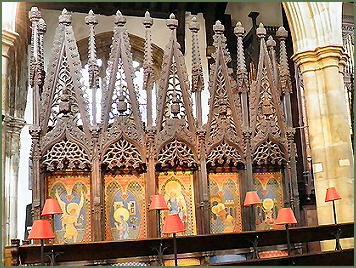
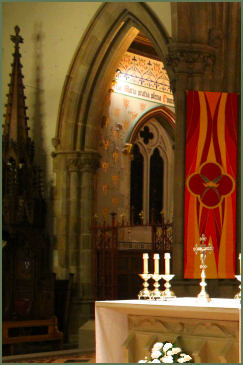 Historic Lancaster, the county town of Lancashire, was founded by the Romans.
Historic Lancaster, the county town of Lancashire, was founded by the Romans.
Lancaster is metioned in the Domesday Book of 1086 as being owned by Roger de Poitou, it is referred to as Loncastre, 'Lon' refers to the River Lune, on which the city stands, while 'castre' derives from the Old English word cćster meaning ' fort' in reference to the Roman fort which once occupied the site.
The Roman fort, built during one of the many revolts in the north of England instigated by the rebellious Brigantes tribe, was situated on the hill where Lancaster Castle now stands and was built by the end of the first century AD, and possibly as early as the 60's. It was rebuilt in stone around 102 A.D. and remained active into the early fifth century. The Wery Wall and Roman Bath House, a surviving fragment of the Roman fort at Lancaster, is situated on the east slope of Castle Hill adjacent to the rear of Mitre House.
A monastery was located on or near the site of today's Lancaster Priory (pictured left) on Castle Hill by the 700's or 800's. Cynibald's cross, an Anglo-Saxon runic cross was found in the churchyard of the Priory in 1807 and is believed to date to the late 800's, it is now displayed at the British Museum.
Roger de Poitou founded the Benedictine priory, dedicated to St Mary, in 1094. In 1539 the monastic institution was abolished at the dissolution of the monasteries and the following year the priory became a parish church. Most of the magnificent interior is medieval, but there are traces of a Saxon church. The oak choirstalls with their rich woodcarving and carved misericords.(above left) date from 1340 and are the third oldest in England, John Ruskin described the fretwork on the stalls as 'the finest in England'.
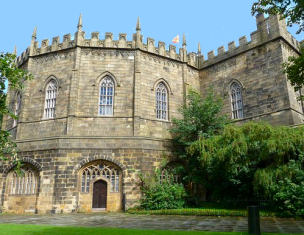 The carved Jacobean style pulpit dates to 1619. The stained glass in the east window was designed by Edward Paley. The church plate includes four flagons, a chalice and two breadholders dated 1678–79, a small chalice presented in 1728 and a cup dated 1757. There are also numerous religious artefacts including Viking ornaments and crusaders coffins and architectural remains of Dark Age origin. The church also contains the Kings Own Memorial Chapel from which hang probably the largest collection of surviving regimental colours and battle honours. The refectory and coffee shop offer light refreshments and there is also a gift shop.
The carved Jacobean style pulpit dates to 1619. The stained glass in the east window was designed by Edward Paley. The church plate includes four flagons, a chalice and two breadholders dated 1678–79, a small chalice presented in 1728 and a cup dated 1757. There are also numerous religious artefacts including Viking ornaments and crusaders coffins and architectural remains of Dark Age origin. The church also contains the Kings Own Memorial Chapel from which hang probably the largest collection of surviving regimental colours and battle honours. The refectory and coffee shop offer light refreshments and there is also a gift shop.
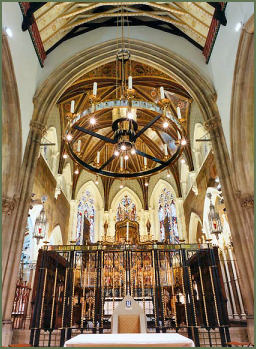 Traces of Roman fortifications around the church have been discovered during building works and archaeological digs and some of these have been left exposed in the field to the north of the church. The field is reached by the footpath which leads from the Priory down to St. George's Quay on the River Lune.
Traces of Roman fortifications around the church have been discovered during building works and archaeological digs and some of these have been left exposed in the field to the north of the church. The field is reached by the footpath which leads from the Priory down to St. George's Quay on the River Lune.
Lancaster Roman Catholic Cathedral, (pictured left) also known as The Cathedral Church of St Peter and Saint Peter's, began as a mission church in 1798, the present church was built on a different site in 1857–59. It contains a large reredos, situated to the west of the Blessed Sacrament Chapel, behind the high altar, which was designed by Scott and consists of a triptych containing paintings and carvings. The baptistry contains a central marble font, an altar with a reredos and stained glass windows by Shrigley and Hunt.
Lancaster Castle dates in part to the middle of the twelfth century, when the great Keep, otherwise known as the Lungess Tower, was built on the site of an earlier tenth century Motte and Bailey castle. The castle was gradually enlarged thrroughout the Middle Ages, reflecting its importance as a defensive structure and a centre for the administration of justice. The late eighteenth to early nineteenth century Shire Hall (pictured above right) next to the keep is a large ten-side room and contains a magnificent display of heraldic shields.
The Castle was also one of Europe’s longest serving prisons until March 2011. Amongst the most famous prisoners were the Pendle Witches, who were imprisoned, tried, convicted and sentenced to death at the castle in 1612. The story of the Pendle witches revolves around two large, destitute families, the Chattoxes and the Demdikes, who held a local reputation for practicing for black magic. They dealt in spells and curses, providing a service for their neighbours but intimidating their enemies with threats of misfortune and death.
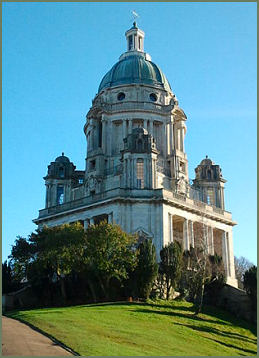 Williamson's Park, highly commended as ‘Best Small Visitor Attraction 2008`, boasts 54 acres of parkland, with walks & play areas. The Butterfly House (pictured below left) contains a tropical rain forest with flowers, trees, vines, foliage and colourful species of butterflies including brilliant swallowtails and cleverly camouflaged Owl butterflies.
Williamson's Park, highly commended as ‘Best Small Visitor Attraction 2008`, boasts 54 acres of parkland, with walks & play areas. The Butterfly House (pictured below left) contains a tropical rain forest with flowers, trees, vines, foliage and colourful species of butterflies including brilliant swallowtails and cleverly camouflaged Owl butterflies.
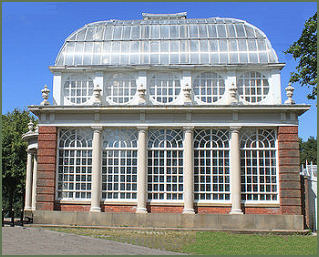 The famous Ashton Memorial (pictured left) which stands in Williamson's Park, with its grandiose green copper dome, was commissioned by James Williamson, Baron Ashton (born 1842) as a tribute to his second wife, Jenny and was built between 1907 and 1909. Rising to around around 150 feet high, the Ashton Memorial dominates the Lancaster skyline and is visible for many miles around. The first floor outdoor viewing gallery offers stunning vistas of the surrounding countryside and across Morecambe Bay. Views include Lancaster Castle and the Priory Church the River Lune.
The famous Ashton Memorial (pictured left) which stands in Williamson's Park, with its grandiose green copper dome, was commissioned by James Williamson, Baron Ashton (born 1842) as a tribute to his second wife, Jenny and was built between 1907 and 1909. Rising to around around 150 feet high, the Ashton Memorial dominates the Lancaster skyline and is visible for many miles around. The first floor outdoor viewing gallery offers stunning vistas of the surrounding countryside and across Morecambe Bay. Views include Lancaster Castle and the Priory Church the River Lune.
The pedestrianised city centre, has a wide range of boutique shops and high street stores, cafés and pubs. The network of streets below the castle are lined with wealthy townhouses. Tradition relates that Bonnie Prince Charlie and his army officers stayed at the eighteenth century townhouse at 76 Church Street during his ill fated 1745 Jacobite uprising. While the Officers may have stayed there, it is more likely that the Prince lodged with Mrs Livesey higher up Church Street. The house, which is privately owned, can only be viewed during special guided tours.
Lancaster City Museum and The King's Own Royal Regiment Museum are situated in an elegant Georgian building at the heart of the city. The museum covers the history of Lancaster Lancaster’s past from the Romans to the present day. Lancaster Maritime Museum is housed in the Port of Lancaster Custom House and warehouse buildings which date from the latter half of the eighteenth century. A footpath from the Custom House leads to the impressive 200 year old stone aqueduct, which carries the Lancaster Canal over the River Lune, on five wide arches.
Penny's Almhouses were established from an endowment left by William Penny, three times Mayor of Lancaster, built for 12 poor men in 1720, they were restored in 1974 and are still occupied. The almshouses consist of two rows of six houses forming a narrow courtyard with a chapel at the west end. The chapel is occasionally open to the public.
Left- Penny's Almshouses, Right- Lancaster Town Hall
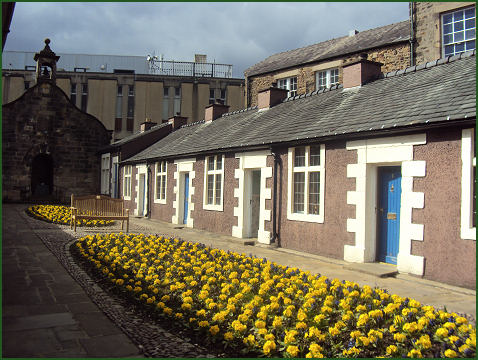
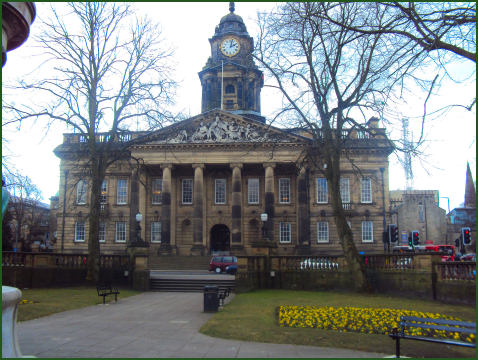
Lancaster's imposing Town Hall, situated in Dalton Square, was officially opened on the 27th December 1909, by Lord Ashton. It replaced the existing Town Hall, which now serves as the City Museum in Market Square. Construction began in 1906 and was finally completed in 1909. Waring and Gillows were the main contractors for the stone work, furniture and wood carvings.
Right-the former Offices of Lancaster architects Paley and Austin and left- Lancaster Castle
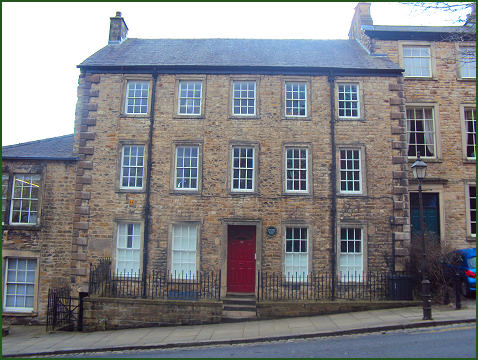
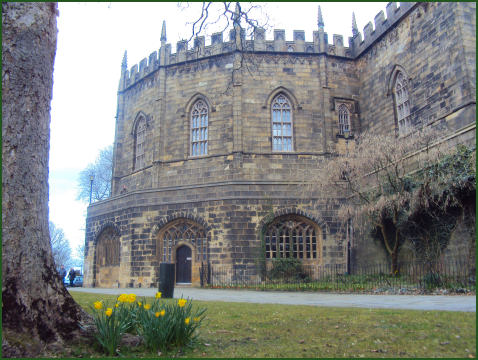
The Judges Lodgings, the city's oldest town house, was once the home of Thomas Covell, keeper of the Castle during the Pendle witch trials of 1612. It later served as a residence for judges visiting Lancaster Castle, and is now a museum displaying a wealth of furniture, porcelain, silver and paintings. In addition to displays of Lancaster's fine Waring and Gillow furniture the top floor it also houses a toy museum with artefacts from various periods. The Cottage Museum based in an eighteenth century building offers an intimate glimpse of early Victorian life. Visitors may meet the Victorian housekeeper and discover gadgets and utensils used in the nineteenth century.
Left- Dalton Square Right- the Cottage Museum
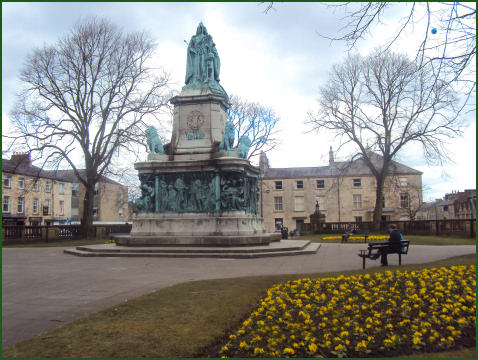
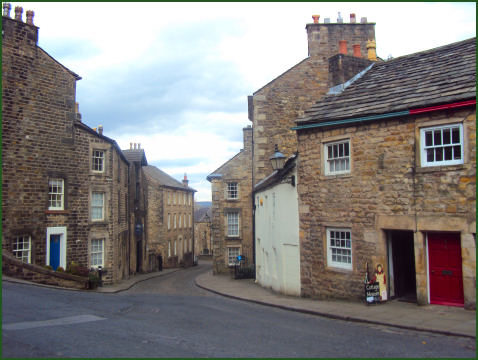
Nearby Places of Interest
Crook O' Lune popular beauty spot on the River Lune, 4 miles from Lancaster
Whalley Abbey- founded by Henry de Lacy, third Earl of Lincoln on the 4th April 1296.
Clitheroe Castle-Norman castle keep and museum, said to be one of the oldest buildings in Lancashire, and one of the smallest keeps in England,
